A blog about Marinwood-Lucas Valley and the Marin Housing Element, politics, economics and social policy. The MOST DANGEROUS BLOG in Marinwood-Lucas Valley.
Saturday, April 1, 2017
Greenwald: Empowering the "Deep State" to Undermine Trump is Prescription for Destroying Democracy
NERMEEN SHAIKH: We’re looking at the growing scandal over the Trump administration’s alleged dealings with Russia before and after the November election. In early January, Democratic Senator Chuck Schumer appeared on The Rachel Maddow Show and suggested the intelligence community may try to get back at Donald Trump.
SEN. CHUCK SCHUMER: Let me tell you, you take on the intelligence community, they have six ways from Sunday at getting back at you. So, even for a practical, supposedly, hard-nosed businessman, he’s being really dumb to do this.
AMY GOODMAN: That was the Senate minority leader, Chuck Schumer, in January.
Some supporters of Trump, including Breitbart News, are now accusing the intelligence agencies of attempting to wage a "deep state coup" against the president. Meanwhile, some critics of Trump are openly embracing such activity, like Bill Kristol, the prominent Republican analyst who founded The Weekly Standard. He wrote on Twitter, "Obviously strongly prefer normal democratic and constitutional politics. But if it comes to it, prefer the deep state to the Trump state."
So, still with us, Pulitzer Prize-winning journalist Glenn Greenwald of The Intercept, speaking to us from Rio de Janeiro, Brazil. Glenn, explain what the deep state is, and respond.
GLENN GREENWALD: The deep state, although there’s no precise or scientific definition, generally refers to the agencies in Washington that are permanent power factions. They stay and exercise power even as presidents who are elected come and go. They typically exercise their power in secret, in the dark, and so they’re barely subject to democratic accountability, if they’re subject to it at all. It’s agencies like the CIA, the NSA and the other intelligence agencies, that are essentially designed to disseminate disinformation and deceit and propaganda, and have a long history of doing not only that, but also have a long history of the world’s worst war crimes, atrocities and death squads. This is who not just people like Bill Kristol, but lots of Democrats are placing their faith in, are trying to empower, are cheering for as they exert power separate and apart from—in fact, in opposition to—the political officials to whom they’re supposed to be subordinate.
And you go—this is not just about Russia. You go all the way back to the campaign, and what you saw was that leading members of the intelligence community, including Mike Morell, who was the acting CIA chief under President Obama, and Michael Hayden, who ran both the CIA and the NSA under George W. Bush, were very outspoken supporters of Hillary Clinton. In fact, Michael Morell went to The New York Times, and Michael Hayden went to The Washington Post, during the campaign to praise Hillary Clinton and to say that Donald Trump had become a recruit of Russia. The CIA and the intelligence community were vehemently in support of Clinton and vehemently opposed to Trump, from the beginning. And the reason was, was because they liked Hillary Clinton’s policies better than they liked Donald Trump’s. One of the main priorities of the CIA for the last five years has been a proxy war in Syria, designed to achieve regime change with the Assad regime. Hillary Clinton was not only for that, she was critical of Obama for not allowing it to go further, and wanted to impose a no-fly zone in Syria and confront the Russians. Donald Trump took exactly the opposite view. He said we shouldn’t care who rules Syria; we should allow the Russians, and even help the Russians, kill ISIS and al-Qaeda and other people in Syria. So, Trump’s agenda that he ran on was completely antithetical to what the CIA wanted. Clinton’s was exactly what the CIA wanted, and so they were behind her. And so, they’ve been trying to undermine Trump for many months throughout the election. And now that he won, they are not just undermining him with leaks, but actively subverting him. There’s claims that they’re withholding information from him, on the grounds that they don’t think he should have it and can be trusted with it. They are empowering themselves to enact policy.
Now, I happen to think that the Trump presidency is extremely dangerous. You just listed off in your news—in your newscast that led the show, many reasons. They want to dismantle the environment. They want to eliminate the safety net. They want to empower billionaires. They want to enact bigoted policies against Muslims and immigrants and so many others. And it is important to resist them. And there are lots of really great ways to resist them, such as getting courts to restrain them, citizen activism and, most important of all, having the Democratic Party engage in self-critique to ask itself how it can be a more effective political force in the United States after it has collapsed on all levels. That isn’t what this resistance is now doing. What they’re doing instead is trying to take maybe the only faction worse than Donald Trump, which is the deep state, the CIA, with its histories of atrocities, and say they ought to almost engage in like a soft coup, where they take the elected president and prevent him from enacting his policies. And I think it is extremely dangerous to do that. Even if you’re somebody who believes that both the CIA and the deep state, on the one hand, and the Trump presidency, on the other, are extremely dangerous, as I do, there’s a huge difference between the two, which is that Trump was democratically elected and is subject to democratic controls, as these courts just demonstrated and as the media is showing, as citizens are proving. But on the other hand, the CIA was elected by nobody. They’re barely subject to democratic controls at all. And so, to urge that the CIA and the intelligence community empower itself to undermine the elected branches of government is insanity. That is a prescription for destroying democracy overnight in the name of saving it. And yet that’s what so many, not just neocons, but the neocons’ allies in the Democratic Party, are now urging and cheering. And it’s incredibly warped and dangerous to watch them do that.
AMY GOODMAN: And The Wall Street Journal's report that says now intelligence officials are not giving President Trump all the information because they're concerned about what he’ll do with it, not to mention intelligence agencies of other countries deeply concerned about what Trump will do with it, and particularly concerned about what he might share with Russia?
GLENN GREENWALD: Well, so, first of all, there’s a media issue here, which is that if you look at The Wall Street Journal report, it’s pretty much exactly the same as every other significant report about Russia over the last six months, many of which have proven to be completely false. It’s based on anonymous officials making extremely vague claims. Even The Wall Street Journal says, "We don’t know who’s doing this, withholding information. We don’t know how much information is being withheld."
Secondly, the idea that Donald Trump is some kind of an agent or a spy of Russia, or that he is being blackmailed by Russia and is going to pass secret information to the Kremlin and endanger American agents on purpose, is an incredibly crazy claim that has been nowhere proven to be true. It reminds me of the kind of things Glenn Beck used to say about Obama while he stood at his chalkboard and drew those—those unstable charts that he drew, these wild conspiracy theories that are without evidence.
We ought to have a serious, sober, structured investigation of the claims that Russia hacked the DNC and John Podesta’s emails and that there were improper ties between Donald Trump and the Russians, and that ought to be made public so that we can see the information. But this constant media obsession of leaking whatever someone whispers to them about Donald Trump and Russia, because they know it will get their reporters huge numbers of retweets on Twitter and tons of traffic by people who are being fed what they want to hear, is really feeding into the worst kind of hysteria and even fake news that the media says they’re trying to combat. These are really serious claims that merit serious investigation, and that’s exactly what we’re not getting.
NERMEEN SHAIKH: Well, in a recent piece in The Intercept by one of your colleagues, they write, "If in fact all of this is 'non-sense,' Trump has the power as president to make that clear immediately—by declassifying all government intercepts of communications between Russian nationals and anyone in his orbit." So, do you think, Glenn, that Trump ought to be doing that?
GLENN GREENWALD: I mean, it’s an interesting point, because, for example, there have been lots of claims made about the communications that General Flynn had with Russian diplomats and what these transcripts supposedly reflect, and yet nobody has seen the transcripts. We’ve seen little bits and pieces of them. We haven’t seen the whole transcript. We ought to see that whole transcript. And my colleague, Jon Schwarz, who wrote that piece, is absolutely right that it’s within President Trump’s power to order it instantly declassified. There’s no review of that decision, and then it could be made public.
On the other hand, it is really bizarre, just as a reporter who has been in the middle of a controversy for the last four years about the leaking of classified information, to hear people suggest that the president now ought to take the most sensitive intercepts that the government is capable of obtaining, which is how they eavesdrop on Russian officials inside the Kremlin, and just toss them to the public like there’s no problem at all with doing that. I think that what you’re seeing here is this really disturbing double standard, that all we’ve heard since the war on terror is that classified information is sacred and anybody who leaks it is treasonous and satanic and belongs in jail for a really long time, and now classified information seems to be something that’s just a plaything, like something that we just toss around for fun if it serves a certain agenda. And I think that that’s one of the issues that’s bothering me about the way this discourse is unfolding.
https://www.democracynow.org/2017/2/16/greenwald_empowering_the_deep_state_to
Friday, March 31, 2017
BIG BOX JESUS
BIG BOX JESUS
by John Sanphillippo 03/18/2017

One of my cousins recently attended an event at a suburban church and I tagged along. I’m amoral and omnivorous. I’ll go to any house of worship on the odd chance I might actually learn something useful – and I often do. And I meet a lot of really nice people along the way. But mostly I like to explore the landscapes other people inhabit. Church provides an intimate glimpse into what people are thinking and feeling in a particular location.
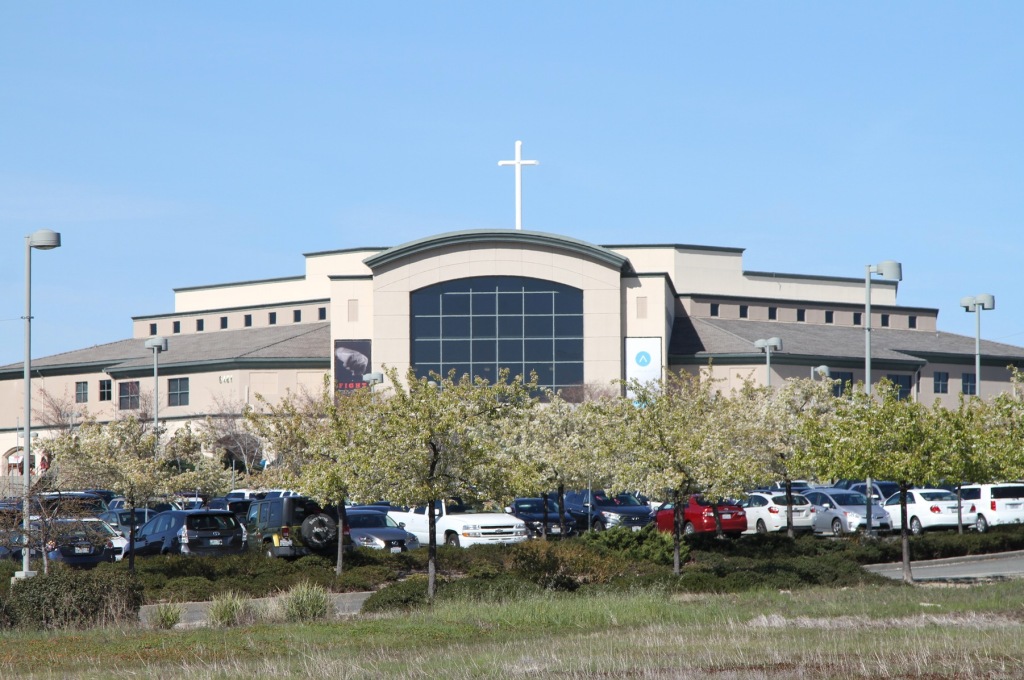









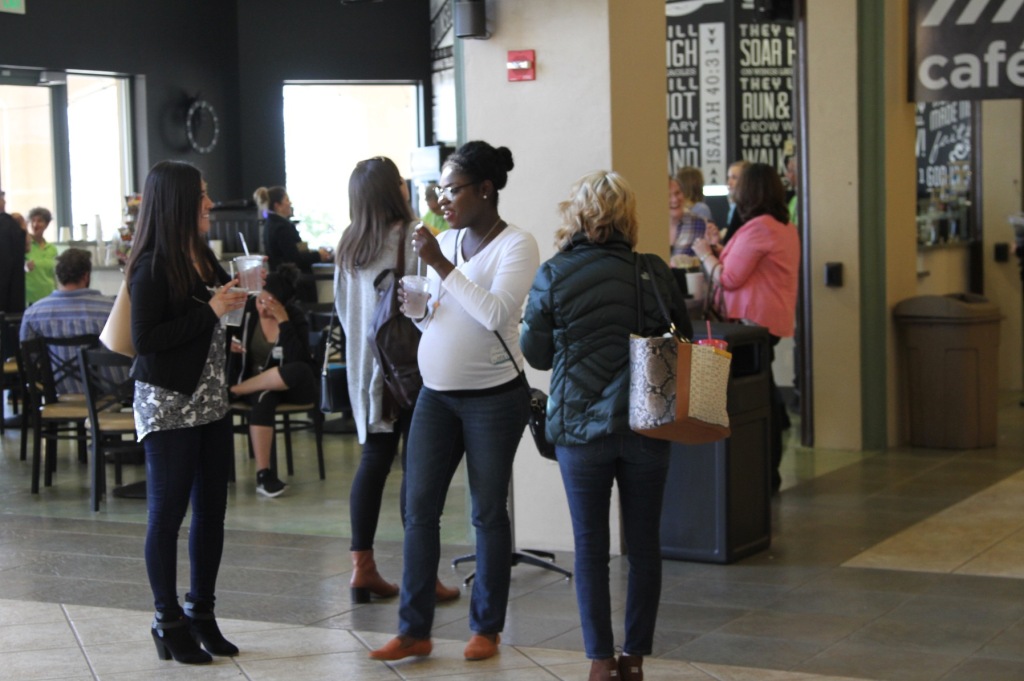
I was immediately impressed with how much this church looked and functioned like a shopping mall. The size, shape, and general construction of the buildings and surrounding parking lots were indistinguishable from a large retail center. I spent more time than I probably should have trying to figure out which denomination it was. Catholic? Definitely not. Lutheran? Not exactly. Baptist? Meh. Mormon? Nope. It was a generic all inclusive Christian arrangement that celebrated the lack of any specific affiliation. Come and worship. We take all kinds. And enjoy the ample free parking and food court while you’re here. There was a well populated Christian school, a substantial auditorium, and all manner of programs and facilities. It was a highly successful suburban version of Big Box Jesus.



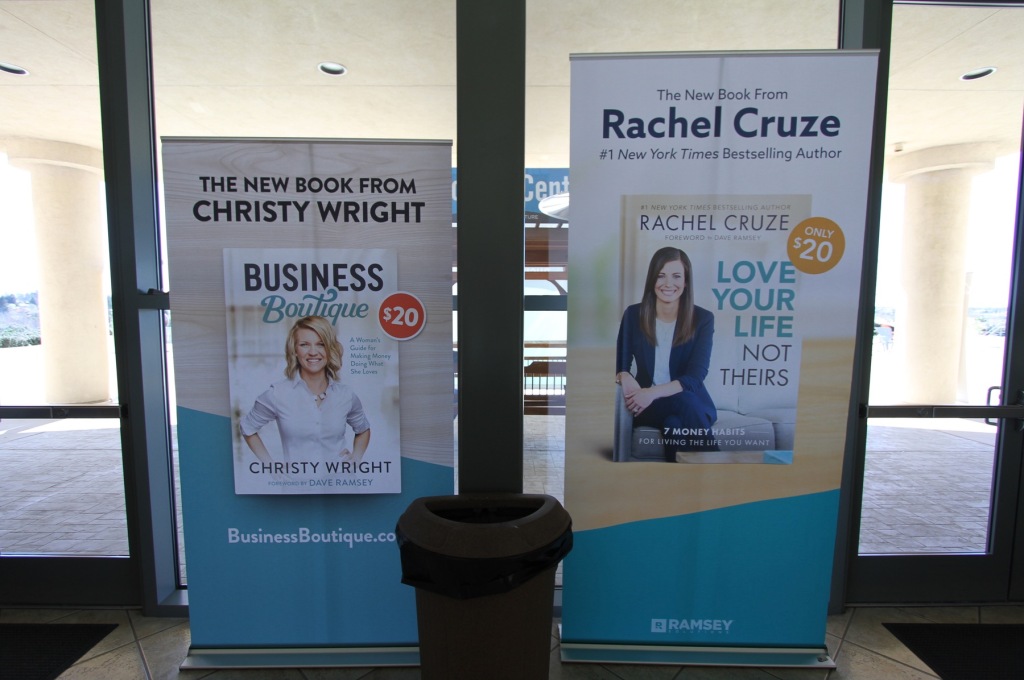



The event my cousin was attending wasn’t strictly religious in nature. It was more of a collection of speakers who each preached a version of financial independence with a Christian slant. The majority of the attendees were suburban women like my cousin looking to start or improve an independent business venture.
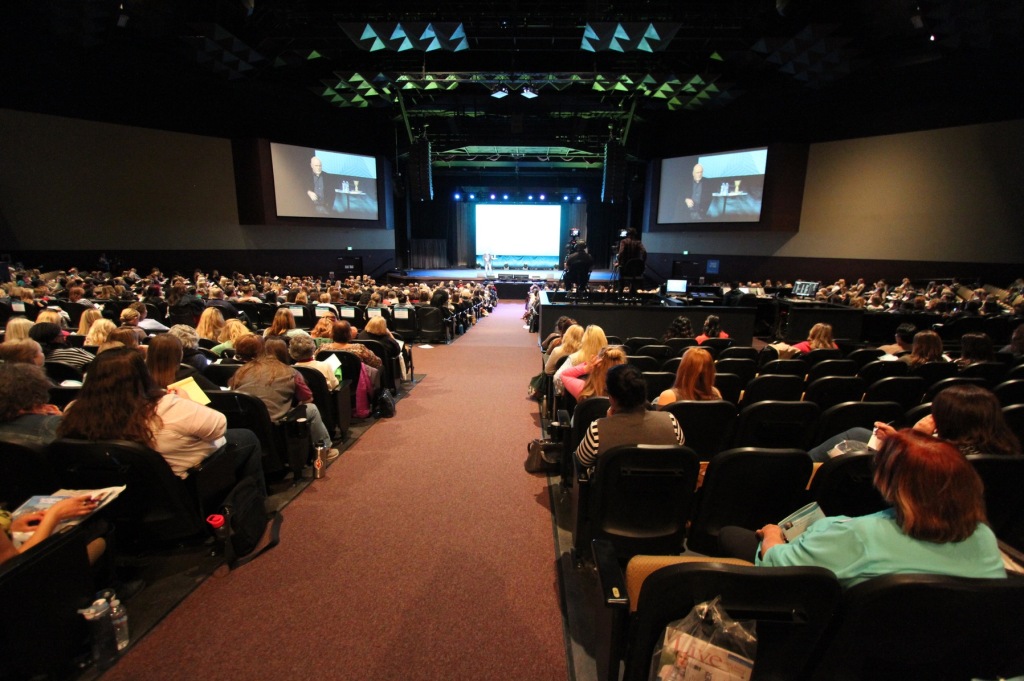


A borrower is a slave to his master. A thousand heads nodded. Always set aside 25% of everything you earn. The congregants listened intently. Start small and build up incrementally. There were biblical parables about prudence leading to abundance. Knowing smiles of agreement followed. There were some folksy stories about the misguided foolishness good people often stumble into. Laughs ensued from the audience. I liked these people.
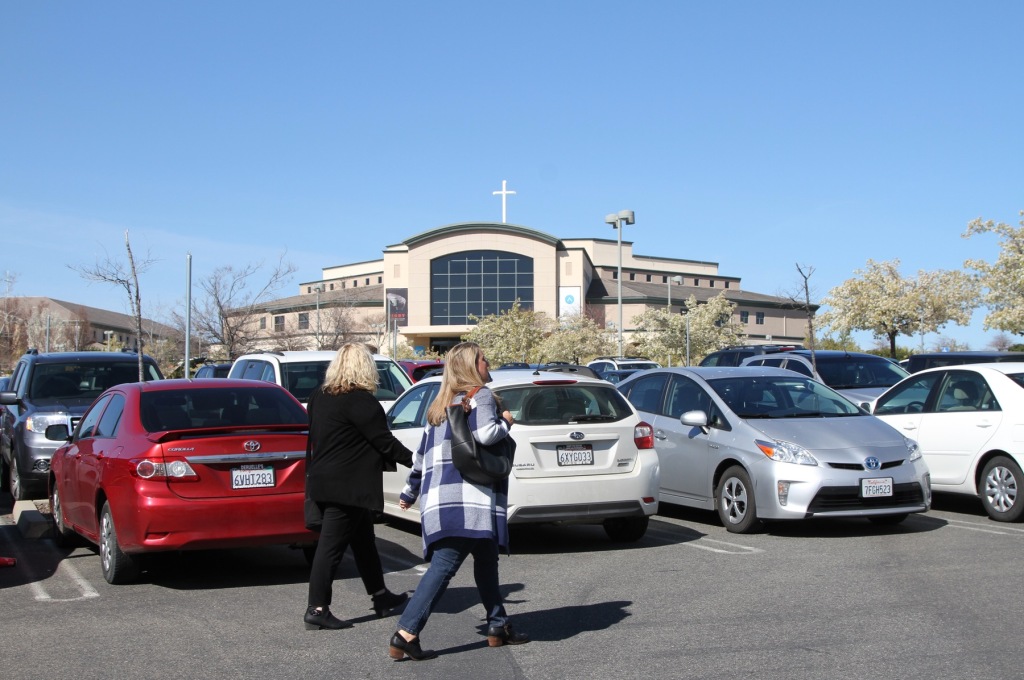



But then I looked out at the parking lot. How many people paid cash for their cars? I explored the subdivisions all around the church. How many people bought their suburban homes with cash? How many people are capable of setting aside even a sliver of savings on a regular basis ever. How many people bought their clothes and shoes and had their hair done with a credit card that got rolled over into a big ball of vague but gradually mounting debt? How many people are approaching middle age and still paying off student loan debt?
I understand the dynamics of contemporary accounting. Carrying mortgage debt provides a substantial tax advantage. Using “other people’s money” at a low interest rate to invest in an asset that consistently rises in value is smart and frees up cash to be deployed in other more productive ways. Putting cash into savings is inefficient since it sits in a bank earning near zero interest these days. Stock values keep rising so investing in equities is a no brainer.
You can’t go around wearing thrift store clothes and sporting a bowl haircut and expect to be taken seriously in a professional business setting. You don’t want to drive around in an old clunker and put your family at risk when you could have the latest safety and reliability features of a newer car bought on credit. If you can buy that car with a home equity loan and get the tax deduction, all the better. Everything about respectable modern life is predicated on people spending a certain amount of money in a very specific way that is nearly impossible to achieve on a cash basis. And that set of arrangements is in direct conflict with the traditional virtues of frugality, saving, and self reliance. Big Box Jesus takes Visa, Mastercard, and American Express.

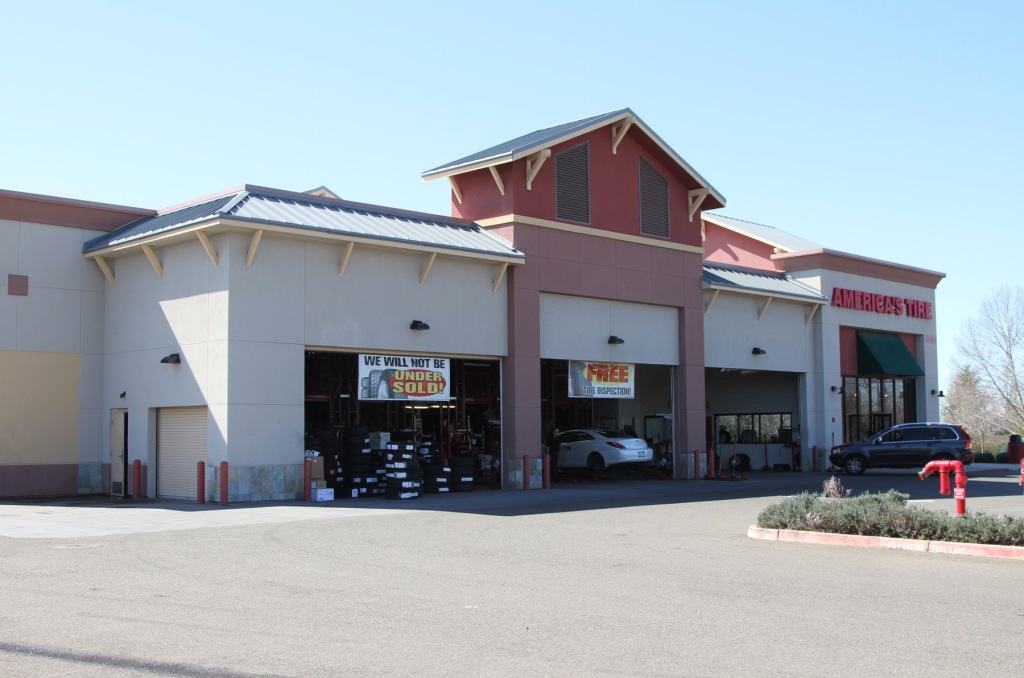

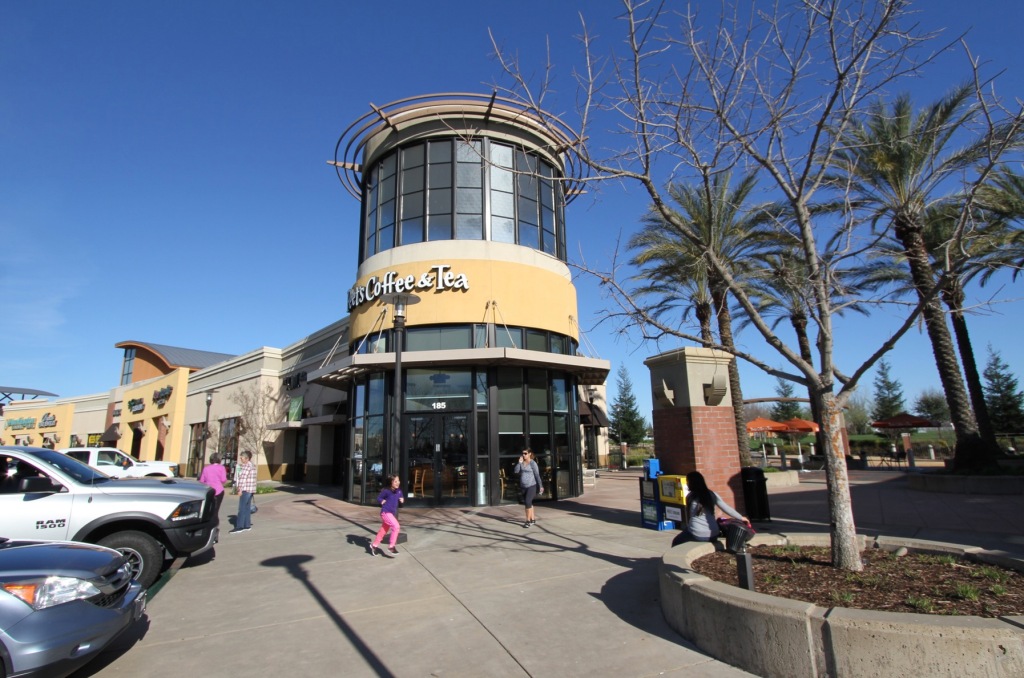
This particular suburb is still very much in the aggressive growth phase of development. Everything is shiny and new. Did the developers build this town on a cash basis? No. It’s built on an Everest of commercial debt. How many of the people at the church earn their living selling real estate, or cars, or brokering mortgages, or refinancing people’s obligations, or helping them manage their stock portfolios? How many people are critically dependent on other people buying their products or services on credit? One way or another… almost everyone.


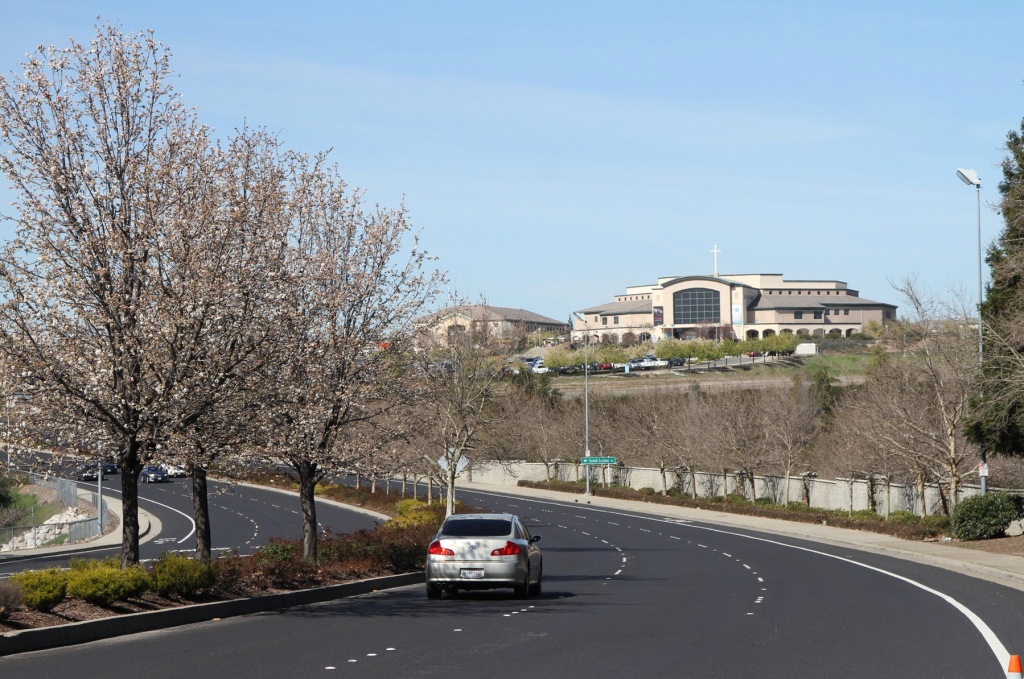
Is the city paying as it goes for infrastructure with funds set aside for maintaining and replacing all the pipes, pumps, and pavement when they wear out? Are pensions fully funded? Will this development pattern generate enough taxable value as it ages to support and maintain all the critical public infrastructure of schools, police, and fire protection? I’ve spent a lot of time exploring the municipal finances of towns all over the country for years. They’re all functionally insolvent beyond a certain not-too-distant point.
What all these practices and institutions need – what they can’t function without – is constant growth based on ever more leverage and debt. This can’t go on forever. Sooner or later there’s going to have to be a day of reckoning when the whole house of cards comes down. If I were a religious man I’d start praying right about now. Instead, I actually do what the preachers say. Pay cash, live below your means, save for the future, and opt out of the situations that trap you in a dysfunctional living arrangement with no future.
John Sanphillippo lives in San Francisco and blogs about urbanism, adaptation, and resilience at granolashotgun.com. He's a member of the Congress for New Urbanism, films videos for faircompanies.com, and is a regular contributor to Strongtowns.org. He earns his living by buying, renovating, and renting undervalued properties in places that have good long term prospects. He is a graduate of Rutgers University.
Thursday, March 30, 2017
Wednesday, March 29, 2017
Rent a Room, Go to Jail if you "Income Discriminate" in Marin
Marin Housing Income Discrimination ordinance for Owner occupied houses. If you mistakenly rent to the wrong person and are perceived to "income discriminate" you may face jail time, stiff fines and a lawsuit by housing activists. Participating in the section 8 programs force you to agree to government inspections, modify your house for accessibility and face a government bureaucracy. Is it any wonder that people don't want to participate?
The first member of the public to speak was 1960s radical and lawyer Stephen Bingham (former federal fugitive for his alleged role in smuggling a gun to Black Panther, George Jackson) who said,
"I was expecting opposition from the public, but there is none"
A very common situation is a homeowner who is forced to rent rooms to make ends meet. A newly divorced Mom, for example, could be forced to consult a lawyer BEFORE renting a room a section 8 tenant. This law is GROSSLY UNFAIR to low income homeowners. I doubt that any of the Supervisors will be forced to rent a room in their own home.
Marin County enacts Sanctuary City policy 3/21/2017
On March 21, 2017, Marin County California Board of Supervisors approved legislation to abide by Sanctuary City policy meant to thwart enforcement of immigration laws. The Marin County sheriff will implement. The deliberate act of defiance of the rule of law creates a "two legal systems" and leniency for dangerous criminals and gang members. Immigration reform is needed to allow otherwise law abiding people to come out of the shadows and openly participate in full society. A Sanctuary City keeps illegal immigrants underground and hurts the vulnerable. Immigration reform is the answer as it respects the individual and the rule of law.
Tuesday, March 28, 2017
5 Scary Chinese Robots of the Future | China Uncensored
Who better to control an army of fire-spouting drones and creepy android mimics than the People's Republic of China? Here are China's Top 5 Scary Robots of the Future.
Meet the Latina Bicycle Brigade Fighting Against Gender-Based Violence
Meet the Latina Bicycle Brigade Fighting Against Gender-Based Violence
The Ovarian Psycos of East L.A. are an all-woman-of-color cycling collective carving out space for themselves in a hostile urban environment.
- NATALIE DELGADILLO
- @ndelgadillo07
- Jul 22, 2016
- 2 Comments

This story originally appeared in Spanish on our sister site, CityLab Latino.
In a way, it was a stroke of luck when Xela De la X’s car broke down in the summer of 2010. Looking for another way to get to work, she began riding her bicycle, something she had never been allowed to do as a child growing up in the East Los Angeles neighborhood of Boyle Heights.
But her rides to work quickly turned into reminders of the culture that made her parents want to keep her home in the first place. "The catcalls felt worse than when I would walk," says De la X, a musician and artist in the Boyle Heights neighborhood who uses this name as a pseudonym. "People paid more attention to me simply because I was a woman on my bike in downtown."
The experience planted a seed. One day when she was traveling home from work, several traffic lights went out because of a power outage. Traffic ground to a halt. "But I was able to maneuver through the traffic without stopping,” says De la X. “And I remember thinking, ‘this is what freedom feels like. This is what it feels like not to have obstacles blocking your movement.’ And I wanted to feel like that again."
The documentary is an intimate glimpse into the lives of these women as they navigate personal struggles and difficult activist work. There is Xela’s fraught relationship with her mother, who failed to protect her from a sexually abusive father, and her struggle to raise her own daughter Yoli in a way that makes her feel strong and whole and loved. There is Andi’s endeavor to connect with her mother and sister, who don’t seem to really understand her involvement with the group. And there is Evie’s internal conflict as her family falls into financial trouble and she has to decide how much time she can give to the Ovas.
But behind this intimate personal story, there is a political one. Twice, the documentary cuts to news footage of the deaths of two young women from the neighborhood, one killed by her boyfriend in the parking lot of her school, and another found dead in Hollenbeck Park Lake in Boyle Heights. The women live surrounded by the threat of violence, many times from the men who are their neighbors. All of their families, too, have lived in fear that this violence will touch their lives someday.
“When I was a kid, I couldn’t do anything really except stay in my room and sometimes watch TV,” says De la X. “I wasn’t allowed on the front porch or in the backyard. Meanwhile, my brothers could go wherever they wanted. Growing up like that, it really gave me a sense of urgency [to change things], but I also had mad amounts of rage,” she says.
In the film, De La X visits the bedroom where she spent so many hours as a child. She almost cannot contain her sadness, breaking into tears before she can finish speaking to the camera. It’s a different kind of existence than the one she lives now, and the one that her daughter Yoli gets to enjoy, joining her mother on rides with the Ovas.
Every month, the collective hosts "Luna Rides," nighttime trips where riders roam the streets under the full moon. Before mounting, they have dialogues about problems they're facing in the community and in their personal lives. They usually have a speaker, and every participant gets a "spoke card" to put between the wheels of her bike, full of information on resources for victims of sexual or domestic violence, among others.
Every month, the collective hosts "Luna Rides," nighttime trips where riders roam the streets under the full moon. Before mounting, they have dialogues about problems they're facing in the community and in their personal lives. They usually have a speaker, and every participant gets a "spoke card" to put between the wheels of her bike, full of information on resources for victims of sexual or domestic violence, among others.
Once a year, the collective also organizes a 26-mile journey called the "Clitoral Mass," which has grown and now takes place in six cities. Hundreds of women come out and ride together, watching out for cars and shouting calls to one another, both joyful and rebellious.
"When we bike together, especially at night, we laugh in the face of fear," says De La X. "We laugh in the face of all these ideas about how women should be."Monday, March 27, 2017
Dozens of CA Cities, Counties Are Increasing Taxes April 1: LIST
Dozens of CA Cities, Counties Are Increasing Taxes April 1: LIST
Here are all the new rates consumers can expect to pay in sales and use taxes across the state.
By Renee Schiavone (Patch Staff) - March 27, 2017 10:21 am ET

California residents and visitors alike will soon be paying more for everyday goods in dozens of local cities and counties. On April 1, the sales and use tax rate will be changing in 42 cities and across seven counties.
Though the statewide sales tax rate is currently 7.25 percent, the overall amount paid in many areas is higher due to special district taxes — which are the rates increasing in April. The increases are the result of voter-approved initiatives in those communities, according to the California State Board of Equalization (BOE).
We've listed all the changes in the table and bullet points below. Keep in mind that the rates for the cities listed below apply only within the indicated city limits, while the countywide changes apply to all cities and unincorporated areas in those counties.
Get free real-time news alerts from the San Rafael Patch.
SUBSCRIBE
If your community isn't listed below, then the tax rate is not increasing. But if you're curious as to what the tax rate in your area is, head to the BOE website at boe.ca.gov and click on the Find a Tax Rate by Address link to find the tax rate for a specific address. The new tax rates will be available on this website on April 1. You may also call the BOE Customer Service Center at 1-800-400-7115 on weekdays, between 8 a.m. and 5 p.m.
Cities with New Tax Rates Old Rate New Rate
Belmont (San Mateo County) 8.75% 9.25%
Chula Vista (San Diego County) 7.75% 8.25%
Clearlake (Lake County) 7.75% 8.75%
Del Mar (San Diego County) 7.75% 8.75%
Downey (Los Angeles County) 8.75% 9.25%
East Palo Alto (San Mateo County) 8.75% 9.25%
El Centro (Imperial County) 7.75% 8.25%
Fairfax (Marin County) 8.75% 9.00%
Fortuna (Humboldt County) 7.75% 8.50%
Fountain Valley (Orange County) 7.75% 8.75%
Hemet (Riverside County) 7.75% 8.75%
Indio (Riverside County) 7.75% 8.75%
Isleton (Sacramento County) 8.25% 8.75%
La Palma (Orange County) 7.75% 8.75%
La Quinta (Riverside County) 7.75% 8.75%
Lakeport (Lake County) 7.75% 8.75%
Loomis (Placer County) 7.25% 7.50%
Lynwood (Los Angeles County) 8.75% 9.75%
Madera (Madera County) 7.75% 8.25%
Martinez (Contra Costa County) 8.25% 8.75%
Menifee (Riverside County) 7.75% 8.75%
Newark (Alameda County) 9.25% 9.75%
Orland (Glenn County) 7.25% 7.75%
Placerville (El Dorado County) 7.75% 8.25%
Pleasant Hill (Contra Costa County) 8.25% 8.75%
Ridgecrest (Kern County) 8.00% 8.25%
Riverside (Riverside County) 7.75% 8.75%
Santa Monica (Los Angeles County) 9.25% 9.75%
Santa Paula (Ventura County) 7.25% 8.25%
St. Helena (Napa County) 7.75% 8.25%
Stockton (San Joaquin County) 8.75% 9.00%
Suisun City (Solano County) 7.38% 8.38%
Temecula (Riverside County) 7.75% 8.75%
Tracy (San Joaquin County) 7.75% 8.25%
Ukiah (Mendocino County) 7.88% 8.38%
Ventura (Ventura County) 7.25% 7.75%
Visalia (Tulare County) 8.00% 8.50%
Wasco (Kern County) 7.25% 8.25%
West Sacramento (Yolo County) 7.75% 8.00%
Westminster (Orange County) 7.75% 8.75%
Yreka (Siskiyou County) 7.25% 7.75%
Yucca Valley (San Bernardino County) 7.75% 8.75%
The following counties are also getting new tax rates, as follows. (The cities listed below each county already have existing district taxes; their rates will also increase)
Merced County (applies to all unincorporated areas and cities including Dos Palos and Livingston): from 7.25% to 7.75%
Atwater: from 7.75% to 8.25%
Gustine: from 7.75% to 8.25%
Los Banos: from 7.75% to 8.25%
Merced: from 7.75% to 8.25%
Monterey County (applies to all cities and unincorporated areas): from 7.375% to 7.75%
Carmel-by-the-Sea: from 8.375% to 8.75%
Del Rey Oaks: from 8.875% to 9.25%
Gonzales: from 7.875% to 8.25%
Greenfield: from 9.125% to 9.50%
King City: from 7.875% to 8.25%
Marina: from 8.375% to 8.75%
Monterey: from 8.375% to 8.75%
Pacific Grove: from 8.375% to 8.75%
Salinas: from 8.875% to 9.25%
Sand City: from 8.375% to 8.75%
Seaside: from 8.375% to 8.75%
Soledad: from 8.375% to 8.75%
Nevada County (applies to all cities and unincorporated areas): from 7.375% to 7.50%
Grass Valley: from 7.875% to 8.00%
Nevada City: from 8.25% to 8.75%
Truckee: from 8.125% to 8.25%
Santa Clara County (applies to all unincorporated areas and cities including Cupertino, Gilroy, Los Altos, Los Altos Hills, Los Gatos, Milpitas, Monte Sereno, Morgan Hill, Mountain View, Palo Alto, Santa Clara, Saratoga, and Sunnyvale): from 8.50% to 9.00%
Campbell: from 8.75% to 9.25%
San Jose: from 8.75% to 9.25%
Santa Cruz County (applies to all cities and unincorporated areas): from 8.00% to 8.50%
Capitola: from 8.50% to 9.00%
Santa Cruz: from 8.50% to 9.00%
Scotts Valley: from 8.50% to 9.00%
Watsonville: from 8.75% to 9.25%
Sonoma County (applies to all unincorporated areas and cities including Cloverdale, Petaluma, and Windsor): from 8.00% to 8.125%
Cotati: from 9.00% to 9.125%
Healdsburg: from 8.50% to 8.625%
Rohnert Park: from 8.50% to 8.625%
Santa Rosa: from 8.50% to 8.625%
Sebastopol: from 8.75% to 8.875%
Sonoma: from 8.50% to 8.625%
Stanislaus County (applies to all unincorporated areas and cities including Hughson, Modesto, Newman, Patterson, Riverbank, Turlock, and Waterford): from 7.375% to 7.875%
Ceres: from 7.875% to 8.375%
Oakdale: 7.875%
For more information about sales and use tax rates, including help for consumers who may have been overcharged, visit boe.ca.gov/knowyourrate or watch the above 'Know Your Tax Rate' video.
Editor's Note: Marin County already pays MORE TAXES than most counties in California. Thanks to some alert citizens, the TAM Tax Scam to increase Sales Taxes was foiled by COST MARIN
Pension Will Be At The Center Of America's Next Financial Crisis (AT MARINWOOD CSD TOO!)
Pension Will Be At The Center Of America's Next Financial Crisis
I’m not a fan of the “greed is good” mentality of Wall Street investment firms. But the next financial crisis that rocks America won’t be driven by bankers behaving badly. It will in fact be driven by pension funds that cannot pay out what they promised to retirees. According to one pension advocacy organization, nearly 1 million working and retired Americans are covered by pension plans at the risk of collapse.
The looming pension crisis is not limited by geography or economic focus. These including former public employees, such as members of South Carolina’s government pension plan, which covers roughly 550,000 people — one out of nine state residents — and is a staggering $24.1 billion in the red. These include former blue collar workers such as roughly 100,000 coal miners who face serious cuts in pension payments and health coverage thanks to a nearly $6 billion shortfall in the plan for the United Mine Workers of America. And when the bill comes due, we will all be in very big trouble.
It’s bad enough to consider the philosophical fallout here, with reneging on the promise of a pension and thus causing even more distrust of bankers and retirement planners. But I’m speaking about a cold, numbers-based perspective that causes a drag on many parts of the American economy. Consider the following.
Pensioners have no flexibility
According to a Bureau of Labor Statistics report from 2015, the average household income of someone older than age 75 is $34,097 and their average expenses exceed that slightly, at $34,382. It is not an exaggeration, then, to say that even a modest reduction in retirement income makes the typical budget of a 75-year-old unsustainable — even when the average budget is far from luxurious at current levels. This inflexibility is a hard financial reality of someone who is no longer able to work and is reliant on means other than labor to make ends meet.
Social Security is in a tight spot
So who will step up to support these former pensioners? Perhaps the government, via Social Security, except that program itself is in crisis and will see its trust fund go to zero just 17 years from now, in 2034, based on the current structure of the program. If millions of pensions go bust and retirees have no other savings to fall back on, it will be nigh impossible to cut benefits or reduce the drag on this program. But won’t a pension collapse mean we desperately need Social Security, even in an imperfect form, well beyond 2034?

The guaranty is no solution
There is an organization, the Pension Benefit Guaranty Corporation (PBGC), which is meant to insure pensions against failure. However, it was created in 1974 as part of a host of financial reforms and is far from a perfect solution, primarily because it is funded by premiums from defined-benefit plan sponsors and assets seized from former plan sponsors that have entered bankruptcy.
What happens when a handful of troubled pension funds turns into dozens or hundreds? Remember, the PBGC guarantees a certain amount that is decidedly lower than your full pension — as members of the Road Carriers 707 pension fund learned when the group “protected” their pensions by helping to pay benefits, which had been reduced from $1,313 per month to $570. That’s better than zero, but hardly encouraging.
This is not about helping Baby Boomers fund an annual cruise to the Caribbean. Older, low-income pensioners are not saving their money. Instead, they’re spending it on necessities such as food, housing, healthcare and transportation. That means every penny you reduce from their budget means a penny in spending that is removed from the U.S. economy.
Anyone who has taken Econ 101 knows about the “multiplier effect” where $1 in extra spending can produce a much larger amount of economic activity as that dollar circulates around businesses, consumers and banks … or in this case, how $1 less in spending causes a an equally powerful cascade of negative consequences.
By helping ward against a pension crisis, America will be protecting its economy for everyone — plain and simple. But that requires some tough decisions on all sides. For instance, the U.S. Treasury denied a cut to New York Teamsters’ pension plan that was proposed last year. But now the fund is on the brink of collapse, and its recipients are facing benefits that are in some cases one-third what they were 15 years ago.
Like Social Security, current workers can’t contribute enough to offset the big obligations owed to retirees. And as with the flagship entitlement program, it’s up to regulators and legislators to step in — even when it may not be easy — in order to keep the system from collapsing. Let’s hope they make both pension reform and Social Security reform a priority in the near future.
Jeff Reeves is a stock analyst and executive editor of InvestorPlace.com. His commentary has also appeared on CNBC, Fox Business, USA Today, and the Wall Street Journal network.
Sunday, March 26, 2017
Subscribe to:
Comments (Atom)